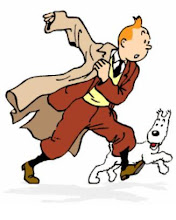 Blood, sex, tears and chips!
Blood, sex, tears and chips!You wouldn’t know it from this picture, but it all goes on in this area of Cardiff. For many it’s a place to meet and get some food before moving onto a club or event in the city for others it’s a place where people fight whilst intoxicated before spending the night in A and E or the drunk tank cell at the local police station. Fights have been fought, blood has been split a number of relationships have started and ended, all around the sale from the makings of a potato.

Whether you know it as Chippy lane, Chip row, Chip Pan Alley or simply as Caroline Street, this area is famous and well known to the people. The road has a legendary name whether you live in the city or not.
Welsh singer Charlotte Church would often come to one of the businesses during her teenage years with friends before moving onto a club. If you want to believe the rest of the story it’s also believed she met boyfriend Gavin Henson for the first time during a night out down Caroline Street.
Subscribers to the BBC television comedy “Gavin and Stacey” will have heard this area of Cardiff referred to when Nessa describes going out and getting “a curry and a fight down Caroline Street”
View Larger Map

Situated between two of the busiest streets in Cardiff, St Mary Street and the Hayes, a stones thrown from the central station and with the Millennium Stadium in site, Caroline Street is a pedestrian road with chip and kebab shops down running down one side.
Due to its location, chippy lane is most popular amongst pub and club leavers seeing its peak times during the hours of eleven at night and two in the morning.
The street is often filled with people every weekend and is a favourite with fans whenever a large sporting event or concert is on in the city.

I visited Dorothy’s, the original chip shop in Caroline Street. Over the years other businesses have moved in and Dorothy’s has slowly become sandwiched between kebab take aways. I spoke to the manager Tony Barco who told me with a smile on his face that he had been there since 1964 and proudly showed me a photo of himself and the shop from thirty years ago.

Tony told me of the history of his trade in the city and how the street had changed over the years. When I asked him what he thought the biggest change had been to the area, he told me that the building of the Millennium Stadium ten years ago had brought massive prosperity to the city adding that when the six nations start again next month he would see regulars again from France, Scotland and Ireland as well as Welsh fans who see a chicken curry and chips from his shop as a traditional, almost ritual part of their day. “I even have regulars from So
 uth Africa and New Zealand”
uth Africa and New Zealand”Jackie is one of Tony’s workers, a man of Chinese origin from Northern Ireland. He told me how he graduated from University last year but when he found he couldn’t find a job and didn’t want to leave an area he loved he got a job that ensured he would keep him in touch with Cardiff’s nightlife.

When serving me a portion of chips for the road, I asked Jackie if the constant flow of customers and the long nights sometimes got him down. He smiled and said if it ever did. “Its views like that that pick me up and turn it back into a good night”. He gave me the eyes up to look over my shoulder. Through the window standing at the cash point across the road in the freezing temperatures was a young woman in a very short pink dress. I turned back around to agree.

As another day dawns the council road sweepers and street cleaners swoop in to clear away the sea of polystyrene plastic containers and grease stained chip shop wrapping paper that litter the ground before shoppers begin to arrive to pound the pavement in search of a New Year bargain.
The scraps of the previous evening’s meal still remain in many of the containers. Sea gulls and pigeons peck at the mashed up chips and the occasional piece of kebab meat, avoiding a random piece of clothing discarded from a fancy dress costume.

In less than an hour Caroline Street will have all evidence of the last twelve hours fights, fall outs, food and all cleared away so that it is ready to serve its visitors for another night of Blood, sex, tears and O yeah! Don’t forget the chips!
*****
Photography by James Snaith







